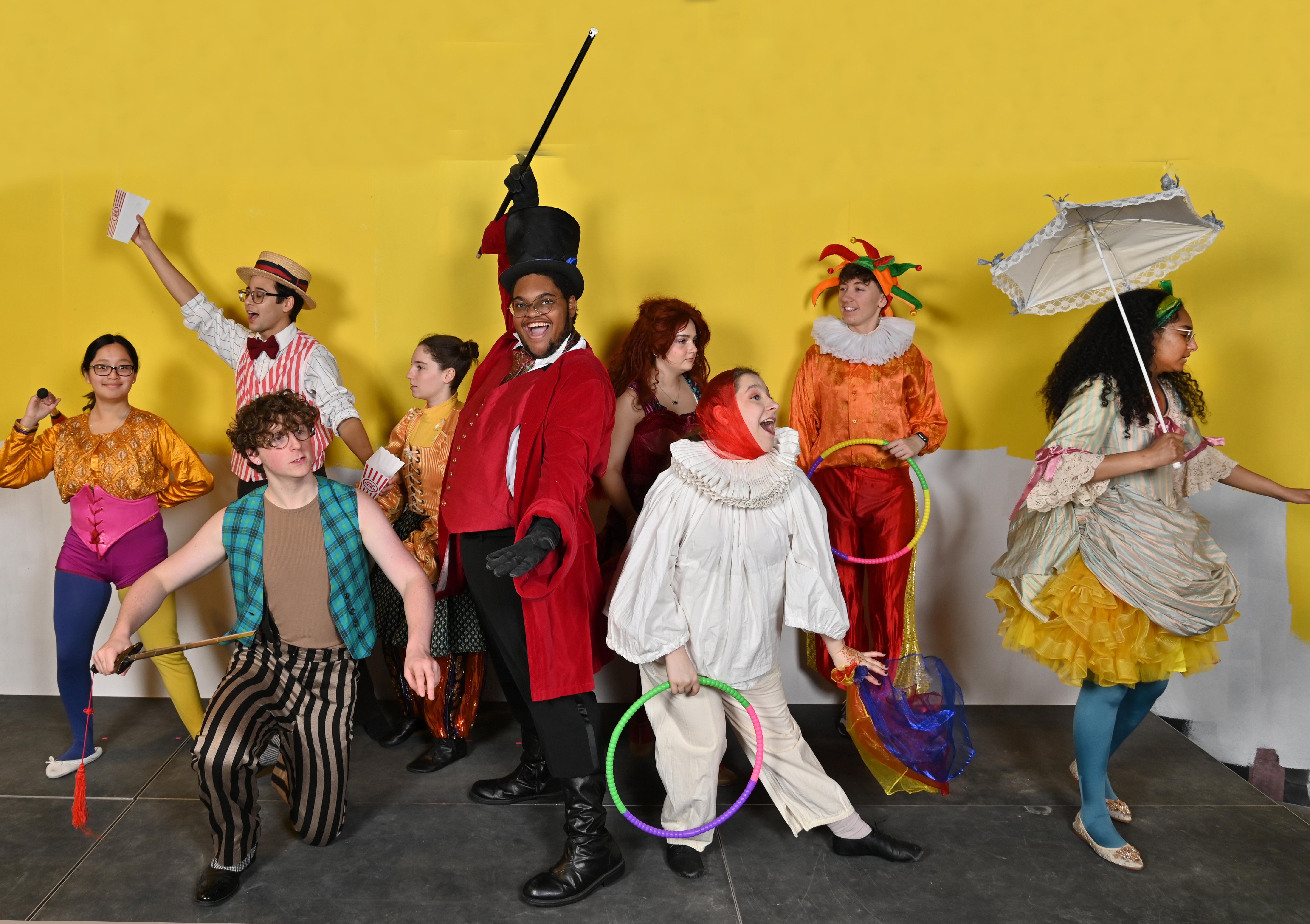The SUNY Oswego musical theatre production of "Tuck Everlasting" balances the weighty central question of immortality with a sense of whimsy, as shown by performers in vibrant circus attire in this pre-production image.
For SUNY Oswego theatre professor and director Jonel Langenfeld-Rial, “Tuck Everlasting” –- opening April 23 in Tyler Hall’s Waterman Theatre -- is more than a musical: It’s a mirror held up to humanity’s deepest questions.
The play revolves around the Tuck family, who are immortal, experiencing interactions that ponder the benefits and drawbacks of immortality. The production process was less about spectacle and more about creating an immersive language to translate immortality into something emotionally deep rooted.
“We wanted the audience to feel the weight of forever,” Langenfeld-Rial explained.
While other versions of “Tuck Everlasting” “took liberties for Hollywood,” Langenfeld-Rial said, the Oswego staging focuses on a moral nuance.
“The story isn’t about escaping death -- it’s about choosing how to live,” she argued. This interpretation urges audience members to “listen, even when you disagree,” a nod to today’s polarized discourse. The Tucks’ fractured family –- reuniting only every decade –- mirrors modern alienation: “It’s about quality of life, not permanence.”
Bringing the novel to life required balancing the gravity of elements, like the immortal Tuck family and the ominous Man in Yellow. Blending folk melodies, modern dance and spoken word, the musical score became a vehicle for emotional authenticity. Amanda Li of the music faculty serves as musical director, bringing together all the pieces.
“The composers crafted music that lets actors breathe –- it doesn’t overpower their vulnerability but elevates it,” she explained.
Circus elements, symbolism
Student designers and technicians took ownership of the show’s sense of whimsy, integrating circus-inspired choreography, symbolic motifs and lighting.
“They researched tirelessly,” Langenfeld-Rial said, praising their integration of imagery and motifs to underscore life’s cyclical nature.
One of the production’s biggest hurdles was staging the novel’s explosion of immortality. Student designers anchored objects like a wheel, a ladder and costumes as symbols for being confined to life. The duality of the use of these symbols mirror the script’s tension between connection and solitude, its angles shifting with each act to reflect emotional arcs.
“Diverse perspectives enrich our understanding of loneliness, legacy and belonging,” Langenfeld-Rial noted. With rehearsals happening six days out of the week, this space becomes an area to grapple with mortality’s weight. These students worked to ease the transitions from intimacy to chaos, creating echoes that would display the Tucks confessing their loneliness, Langenfeld-Rial said.
For college students, the cyclical narrative, spanning multiple eras, resonates deeply. “They’re figuring out their worlds,” she observes, hoping the audience leaves questioning their own legacies.
To bring this tale to life was a beautiful challenge to Langenfeld-Rial and her cast and crew.
“Theatre teaches us to sit with discomfort and grow,” she said, so the question of “would you want to live together?” ultimately “feels urgent,” she said.
The play will have 7:30 p.m. curtains on April 23, 24, 25 and 26, with a final matinee performance at 2 p.m. on May 3 at 2 p.m.
Available via tickets.oswego.edu or any campus box office, tickets are free for SUNY Oswego students, $12 for youths (3 to 12 years old) and $15 for the general public.
–- Written by Keila Aquino-Lobato of the Class of 2025




